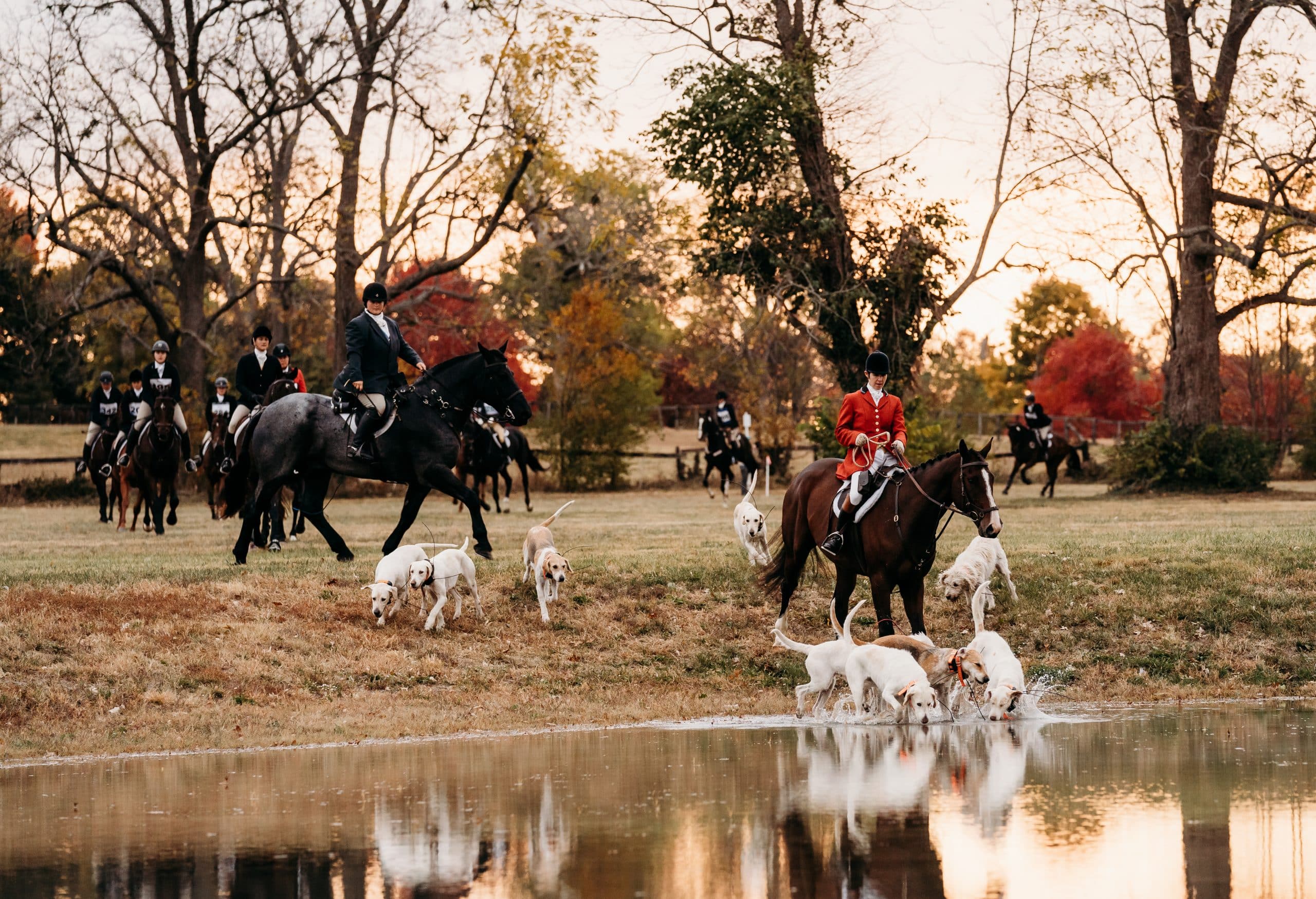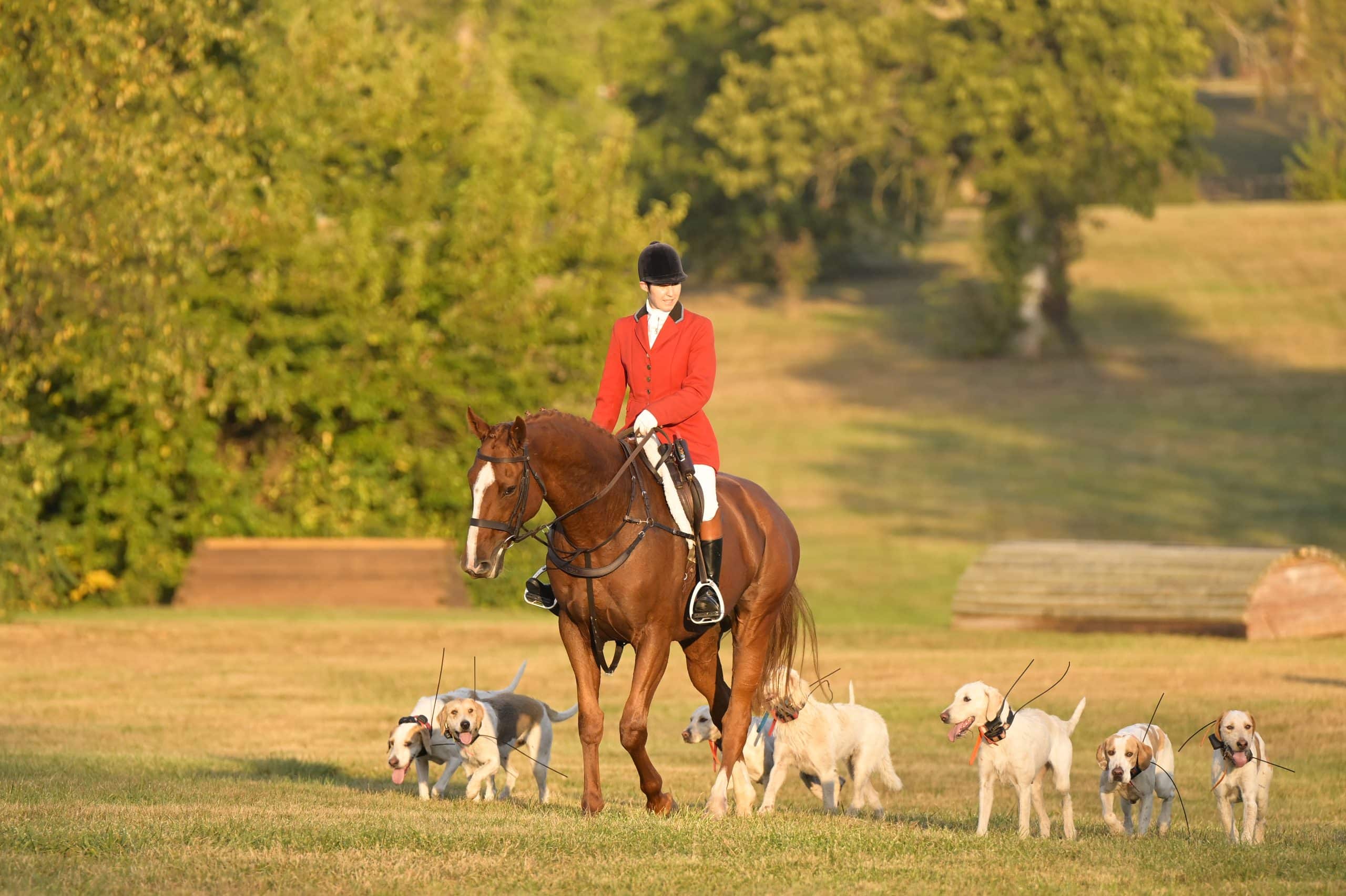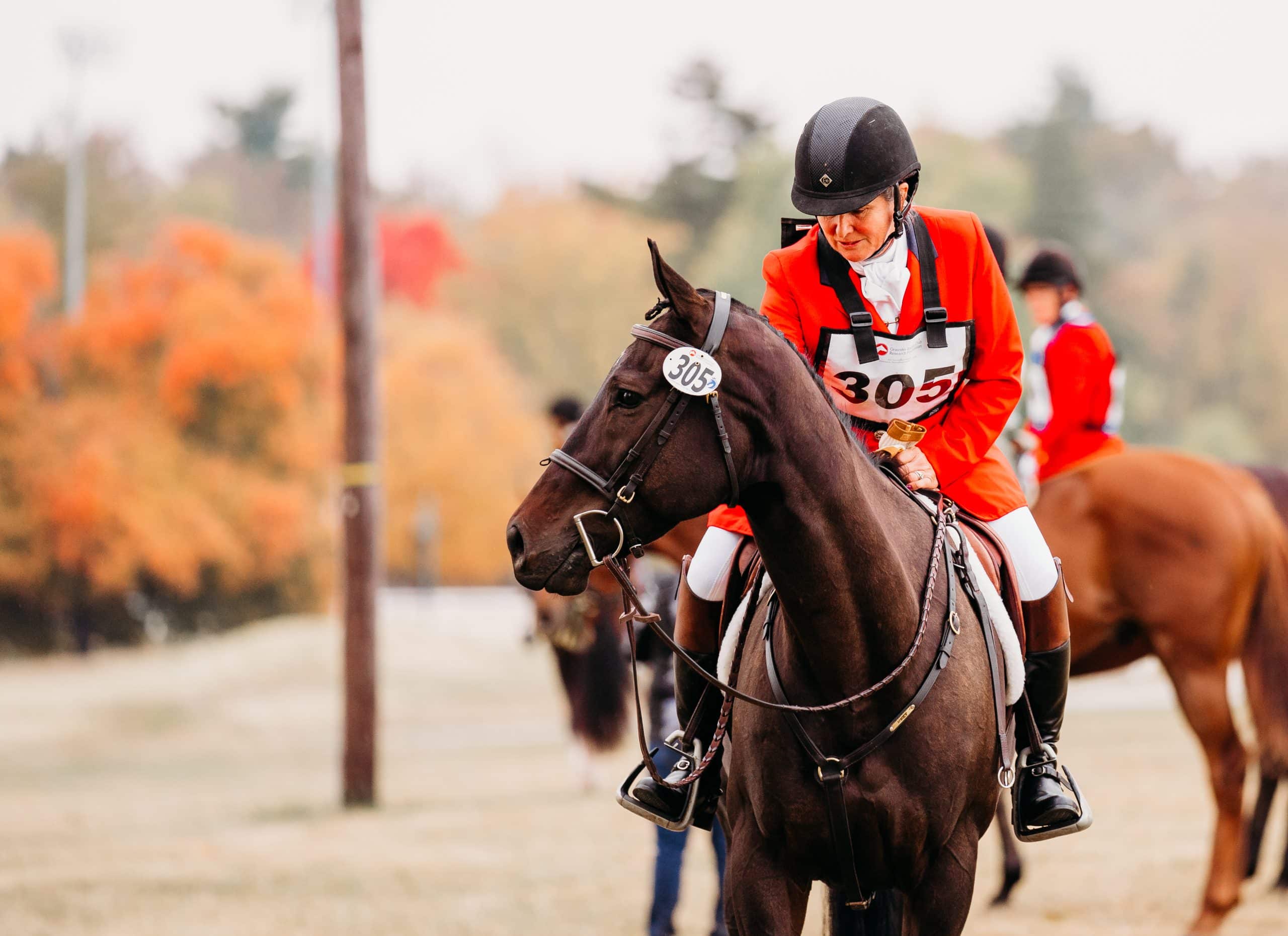
Photo by Captivation Photography
Most experienced foxhunters will tell you nothing compares to an off-track Thoroughbred. They’re intelligent, athletic and trainable, says Betsy Parker, a former racehorse trainer and jockey who is the honorary secretary of Old Dominion Hounds, in Orlean, Virginia — and they’ve seen a lot at the track.
“They’re broken by the highest level of professional in horse sports in the world,” she says. “A 2-year-old in training witnesses (track surface) harrowing, backstretch workers walking horses, jogging horses on the rail, sets of horses going one way or another. They’re used to activity, and it’s usually very easy to take a Thoroughbred and make it into foxhunter, if you do your homework.”
The first step is to locate a hunt near you on the Masters of Foxhounds Association of North America’s website (MFHA.org). Click on your state to find nearby groups, then reach out to the hunt master or secretary regarding protocols for that specific hunt.
Cameron Sadler, MFH of Moore County Hounds, in Southern Pines, North Carolina, says they offer an introduction to foxhunting for people and horses new to the sport. “First we have a face-to-face sit-down, then you can bring your horse to different trainings to get them used to what they have to do for hunting,” she says.
Parker, who introduces riders to foxhunting at her Hunter’s Rest Farm, in Flint Hill, Virginia, recommends watching a video of the sport before your first expedition and reading William Wadsworth’s Riding To Hounds In America. “You can see what it’s going to look like, because it’s pretty mesmerizing when you get there,” she says.
Parker also leads Old Dominion’s third field, a slower, nonjumping group that can be a good introduction to hunting if it’s offered in your area.
Ensure Plenty of Exposure to Groups and Hounds
While Thoroughbreds can make amazing foxhunters, it’s not advisable to throw them — or any horse — into hunting without some preparation. Sadler, who won the Field Hunter class at the 2020 and 2022 Thoroughbred Makeovers, says her secret weapon has been taking her horses hound walking three times a week all summer.
“(We go) on the trail, the field, make a loop back to the kennels,” she says. “(The horses become) completely acclimated to hounds, so that’s not a question when we start hunting. I find that to be a tremendous help, being out there, not doing anything special, just getting used to hounds, who walk beside him, under him, smell his nose, all that stuff.”
Sadler, who’s bought Thoroughbreds off the track as young as 4 or 5 and as old as 9, also spends the summer trail riding in groups. “They learn it’s not a race,” she says. “A trail ride can be an easy walk, maybe trot 20 minutes. They get used to other horses around them; walk, trot, canter; being in front; being behind. Getting to relax in a group of horses is the No. 1 thing (to learn before hunting), in addition to getting used to hounds.”
As an amateur, Sadler enjoys focusing on one young horse at a time, although she and her husband, Moore County huntsman Lincoln Sadler, own 10 experienced Thoroughbreds, allowing them both to hunt three times a week. “There’s so much activity when you’re hunting — other people on other horses, and the hounds are adding to that — so it’s really nice to be able to spend a lot of time one on one with them before you put them in a position to be in the field to hunt,” she says.
If you don’t live near a hunt with summertime activities, Parker recommends getting creative. “Find a trail group, a breed group that does play days, a Quarter Horse group that does trail or ring practice — getting gates, crossing bridges, standing quietly while other horses are working,” she says. “Go to schooling shows, and play in the warmup, stand while other horses work, let him munch grass while under saddle and learn to be independent. A hunter, like any good sport horse, needs to learn independence.”

Getting your horse used to the hounds before you start hunting can be tremendously helpful. Photo by Captivation Photography
Practical Suggestions for Your OTTB’s First Foxhunt
When you arrive at a meet, it’s helpful if your horse has a few groundwork skills.
“You do end up tying your horse to the trailer before and after the hunt, so make sure he’s comfortable in and out of the trailer and that you have hay and water,” Sadler says. “They should view the trailer as a place where things are good and they’re going to rest.”
She suggests working on self-loading, tying and standing in or beside the trailer. “Good ground manners in the basic etiquette of trailering are critical for the foxhunter,” Sadler says. “You’re bridling somewhere that’s not home, so they need to stand there and let you put the bridle on and not be turning and walking away.”
So what happens if you’ve done your homework, head out early on a misty morning to join the field, only to find your horse won’t quite relax? “The biggest thing is to remain calm yourself — that is a big help to the horse,” Sadler says.
She says she tries to distract a horse that’s not paying attention to her, maybe doing a few steps of lateral work. “The most common problem is jigging,” she says. “If you really need to, you can pull out. If the horse is really upset, just pull out and go away from the hunt and come back on a different day. Or take them out of the excitement and let them calm down, and then bring them back out.”
In some areas professionals like Parker can help you and your horse prepare and hunt alongside you during your first few outings, if needed.
Sadler says she’s had success by taking it slow. “I do a lot of flatwork in the ring and eventing — it helps them to learn it’s not a race,” she says. “Flatwork on the trails is great. Dressage and just getting them supple, even using Western methods for suppling, just a mixture.”
As you expose your horse to new things, just take your time, and stay on top of your nerves. “Lots of horses have never been on a group trail ride or ridden outside the ring — it can be new for the person and the horse,” Sadler says. “Remain calm and, when you need to, slow it down and back up (on your training).”
Sadler and Parker both find that putting in the time and work to develop a Thoroughbred hunter pays huge dividends.
When chasing a coyote at more than 20 mph, Sadler says, they can handle the speed and distance because of their breeding. And in addition to being clever and handy, they — and their riders — simply delight in the experience. “They really enjoy it once they get into it,” Sadler says. “Horses like being in a herd. Their ears are up; they’re paying attention to the hounds and other horses, and they seem to enjoy being out there in the group.”

The most important part of keeping your horse calm in the hunt field is staying calm yourself, says Cameron Sadler, pictured here with 2022 Makeover Field Hunter champion Mike Mike. Photo by Captivation Photography
Extra Tips
Betsy Parker, the honorary secretary of Old Dominion Hounds, in Orlean, Virginia, has two tack tips for riders heading out to their OTTB’s first hunt. “You might consider bitting up,” she says. “And you might want to temporarily use a standing martingale so the horse can’t get away from you. The way that many horses get away is by tossing their head and going above the bit. A good way to avoid that is to put on a martingale. Most horses don’t need it forever, but it’s good insurance.”
Did You Know?
To compete in the Makeover Field Hunter division, the rider needs a note from a hunt confirming she’s fairly hunted at least twice, but the horse does not need to have hunted.
Beth Rasin worked as a writer and editor at The Chronicle of the Horse for more than 25 years, including 10 years as the president and executive editor. She now writes for a variety of regional and equestrian publications. Rasin lives in Virginia, where she and her husband and daughter run a boarding facility for retired horses.

